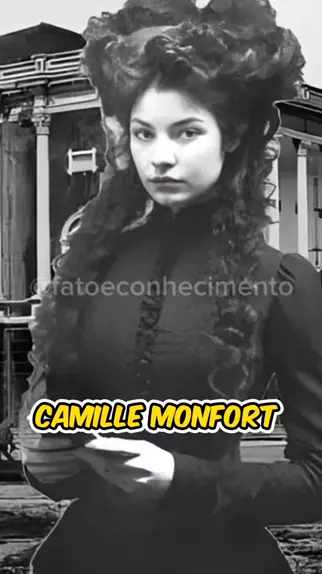Could Camille Monfort truly be the enigmatic figure she is purported to be? A French opera singer whose beauty and allure transcended her era, leaving behind a legacy steeped in mystery and intrigue. The bold assertion that this tale, while captivating, might not hold water in historical fact, invites us to delve deeper into the lore surrounding her.
In 1896, Belém was a city brimming with wealth due to its thriving rubber trade. This prosperity led to extravagant lifestyles where European luxuries were imported regularly. It was within this opulent setting that Camille Monfort made her mark as an opera singer whose performances at Theatro da Paz left audiences spellbound. Her presence ignited passions among the elite gentlemen of Belém while inciting jealousy amongst their spouses. Beyond her vocal talents, it was her unconventional demeanor that set tongues wagging; defying societal norms for women during that period, she carved out her own path unapologetically.
| Bio Data | Details |
|---|---|
| Name | Camille Monfort |
| Date of Birth | 1869 |
| Date of Death | 1896 |
| Place of Birth | France |
| Occupation | Opera Singer |
| Claim to Fame | Vampire Legend |
| Reference Website | Freaky Folklore |
Legend weaves Camille's story intricately, painting her as more than just a gifted artiste but someone who could allegedly commune with spirits and bring them forth physically - an ability some labeled witchcraft. Her demise attributed to a cholera epidemic only added layers of mystique around her life and death. As tales spread about her supernatural abilities, they transformed over time into folklore rich enough to inspire countless creative works across various mediums worldwide.
Despite these enchanting narratives, scrutiny reveals cracks beneath the surface. Investigations point towards Camille Monfort being entirely fabricated through modern technology like artificial intelligence imagery rather than rooted in authentic history. Yet, whether real or imagined, her impact resonates powerfully still today.
This fabricated persona has inspired numerous artistic expressions ranging from literature pieces exploring themes of immortality and forbidden love to visual arts depicting hauntingly beautiful portraits capturing what might have been if she existed genuinely. Music compositions attempt to recreate the ethereal soundscape envisioned when imagining her operatic renditions live on stage back then.
Her alleged resting place adds another layer of fascination drawing visitors curious about encountering something otherworldly amidst serene cemetery surroundings. Social media platforms buzz with content creators sharing experiences visiting such sites believed connected to Camille, further fueling public interest regardless of veracity.
As society continues grappling between fact versus fiction concerning figures like Camille Monfort, one thing remains certain – their stories endure because they touch upon universal human desires: understanding mortality, seeking connection beyond physical existence, and yearning for transcendence above mundane realities.
The legend of Camille Monfort serves as a reminder of how easily misinformation can spread and take root, especially in our digital age. However, it also highlights the enduring appeal of mysterious narratives that challenge conventional boundaries between life and afterlife, reality and fantasy. Whether or not she ever graced stages in Belém or communed with spirits, her mythos continues to captivate audiences globally, proving that sometimes, the most compelling truths lie within the imagination.
Even though evidence suggests Camille Monfort may never have lived, her influence persists through art forms inspired by her supposed existence. These creations allow people worldwide to engage with questions about identity, memory, and legacy long after any potential original inspiration would have faded away naturally.
Ultimately, whether viewed skeptically or embraced wholeheartedly, the phenomenon surrounding Camille Monfort demonstrates humanity's ongoing fascination with blurring lines between fact and fiction. Through her story, we explore timeless themes related to mortality, desire, and transformation – elements central not only to individual lives but cultural evolution overall.
In conclusion, while investigations indicate Camille Monfort might well be nothing more than an elaborate hoax crafted using contemporary tools like AI image generation, her impact endures thanks largely to the rich tapestry of artistic responses inspired by her alleged life and times. Such responses continue fueling discussions around truth versus perception, reminding us all just how powerful storytelling can be irrespective of factual basis.
| Related Information | Details |
|---|---|
| Location | Belém, Brazil |
| Era | Late 19th Century |
| Profession Associated | Opera Singing |
| Primary Claim | Vampire Myth |
| Cultural Impact | Inspiration for Art & Literature |




